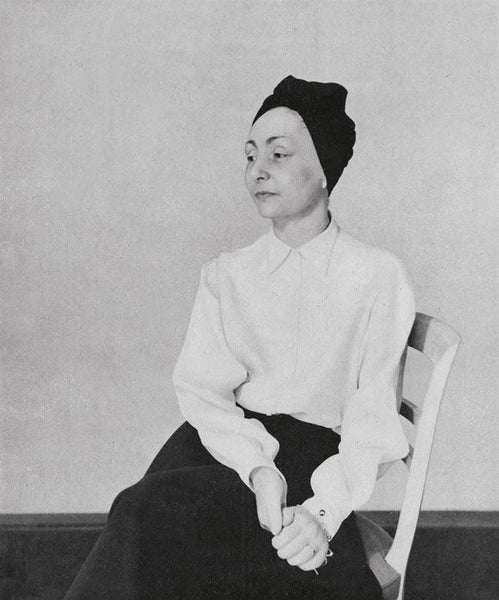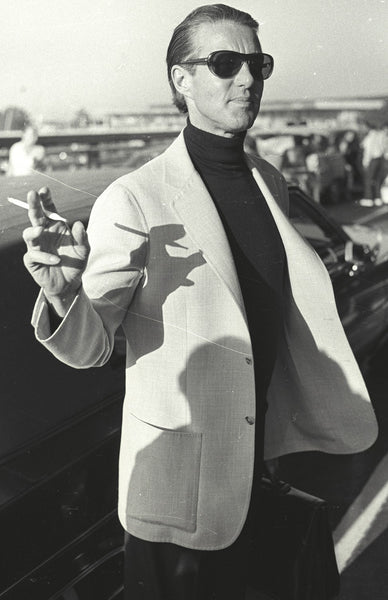Designer Spotlight: Hubert de Givenchy

Hubert James Taffin de Givenchy was born to an aristocratic family in Bauvais in 1927. His father passed away when he was three, leaving Givenchy in the care of his mother and grandmother who shared their palate for the finer things with him. Givenchy’s grandfather also had a great influence on the boy. As artistic director of Gobelins and Beauvais tapestry manufacturers, Givenchy’s grandfather would treat young Givenchy to tours of his collection of old and rare materials. Givenchy moved to Paris in 1944 at the age of 17 to attend the Ecole des Beaux - Arts. One year later, he began apprenticing under Jacques Fath, and later Robert Piguet, Lucien Lelong, and Elsa Schiaparelli.
Givenchy opened his couture house in 1952. La Maison Givenchy launched with a collection of separates including the iconic Bettina Blouse. The Bettina and the rest of the collection was a roaring success, earning Givenchy 7 million francs by the end of the day. Givenchy produced fine couture, but in 1954 became the first couturier to present a ready - to - wear line.
Givenchy was contracted to dress Audrey Hepburn for the film, “Sabrina.” He was delighted snd jumped at the opportunity, however, he mistakenly thought he was dressing Katherine Hepburn. After the confusion, Givenchy agreed to work with Audrey Hepburn. His mistake wound up creating one of the most loyal and long-lasting friendships of his life; Hubert and Audrey got on famously. Givenchy designed Hepburn’s personal wardrobe, and was also engaged to work on a number of her films including “Funny Face.” Givenchy designed Audrey Hepburn’s iconic “Breakfast at Tiffany’s” dress, popularizing the modern “little black dress”. Givenchy and Hepburn each had a hand in elevating each others repute; Givenchy gave her the look, and Hepburn gave him the visibility.
Givenchy went agains the “New Look” wave and released his “sack” dress in 1957. The sack dress was provocative, with a loose, circular silhouette that hid the torso, but with high hemlines that showed off the legs. Givenchy’s loose silhouette was a clear predecessor to the shift, trapeze, and babydoll dresses of the 1960s.
Cristobal Balenciaga, who had become Givenchy’s mentor and who, for the rest of Givenchy’s life, he considered his idol, had a hand in creating the groundbreaking silhouette. The two had become collaborators, and Balenciaga’s high standards, critical eye, and overall perfectionist influence can be seen in Givenchy’s work. Their respect for each other was immense; after his retirement, Balenciaga encouraged his clients to take up with Givenchy.
That same year, Givenchy released “L'interdit,” his first perfume. L'interdit was inspired by Audrey Hepburn, who modeled for its campaign, a move that made her the first actress to have been selected as the face of a perfume.
Givenchy saw continuing success thoughout the 1960s, 1970s, and 1980s, including having launched “Gentleman Givenchy” his first men’s line. He eventually sold his house to Louis Vuitton Moët Hennessey in 1988 but stayed on until his retirement in 1995. He was succeeded by John Galliano, Alexander McQueen, Riccardo Tisci, Julien Macdonald, Ozwald Boateng, and Clare Waight Keller.
Givenchy retired to his estate, Le Jonchet. In his later years he served as president of Christie’s France, helped with the restoration of the vegetable gardens at Versailles (he was a keen gardener!), and collected fine art and furniture until his death in Paris in 2018.
Also in Adore MRS. Couture

Designer Spotlight: Madame Gres

Designer Spotlight: Roy Halston Frowick
Halston was thrown into the limelight when Jacqueline Kennedy wore his pillbox hat to John F. Kennedy’s inauguration. Soon Halston expanded into women’s wear, creating both couture and ready-to-wear fashion catering to the fashionable and elite jet set. Halston also accepted the honor of designing the 1976 US Olympic team uniforms, redesigned Braniff Airlines’ uniforms in 1977, and created uniforms for the New York Police Department and the Girl Scouts in 1978.
Halston was innovative, using slinky knit material and ultrasuedes, and introducing a halter dress design that elongated a wearer’s silhouette. He pioneered the sensual and soft draped looks associated with disco and his beloved Studio 54.

